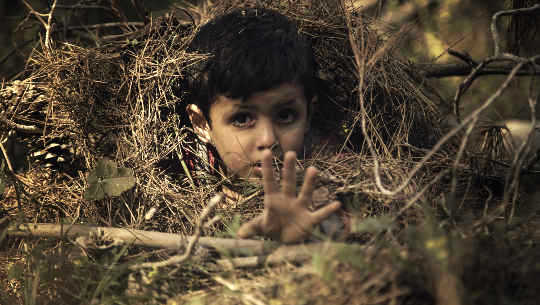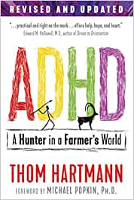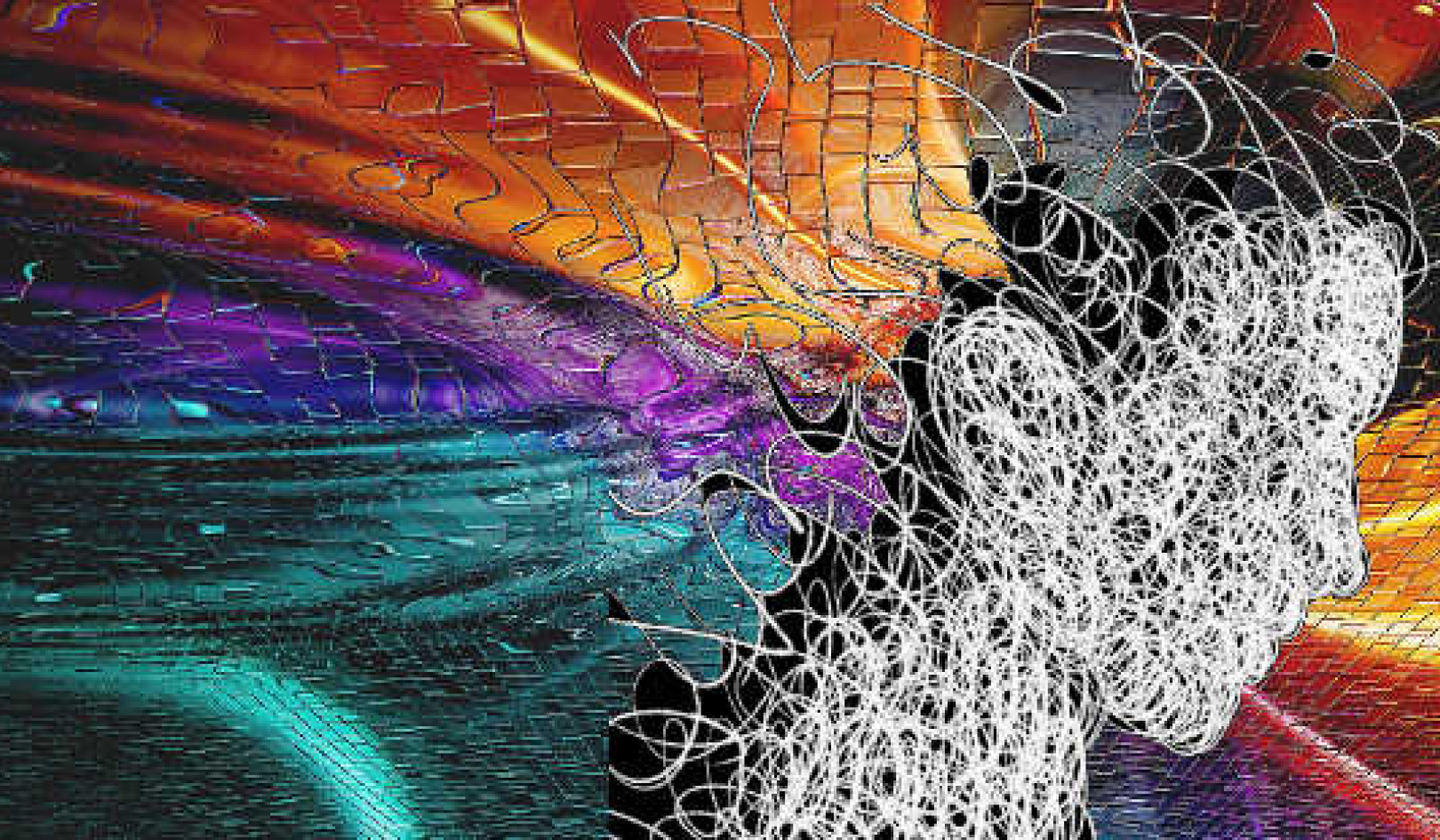
Image by ibrahim abed
Narrated by Marie T. Russell
Video version at the end this article
Know the true value of time; snatch, seize, and enjoy every moment of it. No idleness, no laziness, no procrastination never put off ’til tomorrow what you can do today.
-- Lord Chesterfield (Letters to His Son, Letter XCIX, December 26, O.S. 1749)
Somewhere between ten and forty million men, women, and children in the United States have attention deficit hyperactivity disorder or ADHD. In 2013, the Centers for Disease Control published a paper concluding that “11 percent of U.S. school-aged children had received an ADHD diagnosis by a health care provider” and “the percentage of children 4–17 years of age taking medication for ADHD, as reported by parents, increased by 28% between 2007 and 2011.” (The CDC hasn’t updated these numbers since 2013, presumably because they’ve suffered so many severe budget cuts.) The American Psychiatric Association, on the other hand, says they estimate the incidence of ADHD at around 5 percent of the child population of the United States.
Millions more individuals possess many ADHD-type-characteristics even though they may have learned to cope so well that they don’t think of themselves as people with attention-related problems.
If you are an adult who has experienced chronic issues with restlessness, impatience, poor listening skills, or a difficulty doing “boring” jobs like balancing a checkbook, you already know what it feels like to experience some of the challenges associated with ADHD. And if you’re the parent of an ADHD child, the chances are high you have at least some ADHD traits yourself.
ADHD Is Not Always A Disorder
ADHD is not always a disorder—but instead may be a trait of personality and metabolism. It may be that ADHD comes from a specific evolutionary need in the history of humankind; that ADHD can actually be an advantage (depending on circumstances); and that, through an understanding of the mechanism that led to ADHD’s presence in our gene pool, we can re-create our schools and workplaces to not only accommodate ADHD individuals, but to allow them to again become the powers behind cultural, political, and scientific change that they have so often historically represented.
This state of mind evolved naturally. It’s not at all a malfunction—to the contrary, it’s a coherent, functioning response to a different kind of world and society than that in which most of us live. I’ve shared this information with many ADHD adults, and invariably they are startled, concerned, and ultimately pleased to finally understand one of the principal forces that have shaped their lives.
This knowledge frees them to reframe the way they view their jobs, their relationships, their frustrations—which are usually legion—and their goals. It helps them set new courses and directions that may lead to greater success in life than they ever dreamed possible, or directs them to therapy or medication that will help them adjust to life in a non-ADHD world and workplace.
The ADHD Child and The ADHD Parent
If you’re the father or mother of an ADHD child, odds are high that, like me, you’re an ADHD adult yourself, to some extent. While long viewed as a condition that mostly affects young boys – the diagnosed prevalence in children is around 7:1, male-to-female -- some authorities find that the rate of ADHD among adults is 1:1, male-to-female. This gender differential may be skewed by many factors, including the fact that adult women are more likely to seek psychiatric care and therefore have a higher rate of diagnosis later in life.
On the other hand, boys in our culture are, according to some studies, trained to be more aggressive and outspoken than girls (not to mention the impact of testosterone). Combine this with ADHD, and we may have a situation where ADHD boys stand out more visibly than ADHD girls, and therefore, at least in childhood, are more likely to be diagnosed.
Hunters in Our Schools and Offices: The Origin of ADHD
There is a passion for hunting, something deeply implanted in the human breast. -- Charles Dickens (Oliver Twist, 1837)
The earliest theories about attention deficit disorder characterized it as a diseased state that had to do with brain damage or dysfunction. At various times it has been lumped in with fetal alcohol syndrome, mental retardation, various genetic mental illnesses, psychiatric disorders resulting from early trauma or childhood abuse, and the theory that parental smoking led to fetal oxygen deprivation.
Prior to the early 1970s, when ADHD was first characterized as a specific disorder, ADHD children and adults were largely treated simply as “bad people” (even though attentional deficits have been recognized in the psychological literature since 1905). They were the kids who always got into trouble, the James Deans of the world, the rootless and unsettled adults like Abraham Lincoln’s father, the Lone Ranger, or John Dillinger.
More recent research, however, has demonstrated a high incidence of ADHD among the parents of ADHD children. This discovery caused some psychologists to initially postulate that ADHD was the result of growing up in a dysfunctional family; they suggested that ADHD may follow the same pattern as child or spousal abuse, moving through generations as learned behavior.
The dietary-cause advocates contended that children pattern their parent’s eating habits, and this accounts for the generational patterns of ADHD. Other studies suggest that, like Down’s syndrome or muscular dystrophy, ADHD is a genetic disease, and a specific gene, the A1 variant of the D2 dopamine receptor gene, has been identified by scientists as the leading candidate.
But if ADHD is a genetic disease or an abnormality, it’s a popular one, possibly afflicting as many as twenty-five million individuals in the United States. (Some estimates put ADHD as occurring in 20 percent of males and 5 percent of females. Other estimates are much lower, hitting a bottom of 3 percent of males and 0.5 percent of females.)
With such a wide distribution among our population, is it reasonable to assume that ADHD is simply a quirk? That it’s some sort of an aberration caused by defective genes or child abuse?
Where Did ADHD Come From?
When the condition is so widely distributed, inevitable questions arise: Why? Where did ADHD come from? The answer is: people with ADHD are the leftover hunters, those whose ancestors evolved and matured thousands of years in the past in hunting societies.
There is ample precedent for genetic “diseases” that, in fact, represent evolutionary survival strategies. Sickle cell anemia, for example, is now known to make its victims less susceptible to malaria. When living in the jungles of Africa where malaria is endemic, it was a powerful evolutionary tool against death by disease; in the malaria-free environment of North America, it became a liability.
The same is true of Tay-Sachs disease, a genetic condition that hits mainly Eastern European Jews, and confers on them a relative immunity to tuberculosis. And even cystic fibrosis, the deadly genetic disease common among Caucasians (one in twenty-five white Americans carries the gene), may represent a genetic adaptation—recent research indicates the cystic fibrosis gene helps protect its victims, at younger ages, from death by such diarrheal diseases as cholera, which periodically swept Europe thousands of years ago.
It’s not so unusual, apparently, for humans to have, built into our genetic material, protection against local diseases and other environmental conditions. Certainly, Darwin’s theory of natural selection argues in favor of such bodily defenses. Those individuals with the immunities would survive to procreate and pass along their genetic material.
As the human race moved from its earliest ancestors, two basic types of cultures evolved. In the areas that were lush with plant and animal life and had a low human population density, hunters and gatherers predominated. In other parts of the world (particularly Asia), farming or agricultural societies evolved.
Successful Hunters and Their Traits
Be it pursuing buffalo in North America, hunting deer in Europe, chasing wildebeest in Africa, or picking fish from a stream in Asia, these hunters needed a certain set of physical and mental characteristics to be successful:
1. They constantly monitor their environment. That rustle in the bushes could be a lion or a coiled snake. Failure to be fully aware of the environment and notice the faint sound might mean a swift and painful death. Or that sound or flash of movement might be the animal the hunter was stalking, and noticing it could mean the difference between a full belly and hunger.
I’ve walked through forests and jungles with modern Hunter-types in the United States, Europe, Australia, and East Africa, and one characteristic always struck me: they notice everything. A flipped-over stone, a tiny footprint, a distant sound, an odd smell in the air, the direction in which flowers point or moss grows. All these things have meaning to Hunters and, even when walking quickly, they notice everything.
2. They can totally throw themselves into the hunt; time is elastic. Another characteristic of a good hunter is the ability to totally focus on the moment, utterly abandoning all consideration of any other time or place. When the hunter sees the prey, he gives chase through gully or ravine, over fields or through trees, giving no thought to the events of the day before, not considering the future, simply living totally in that one pure moment and immersing himself in it.
When involved in the hunt, time seems to speed; when not in the hunt, time becomes slow. While a hunter’s ability to concentrate in general may be low, his ability to utterly throw himself into the hunt at the moment is astonishing.
3. They’re flexible and capable of changing strategy on a moment’s notice. If the wild boar vanishes into the brush, and a rabbit appears, the hunter is off in a new direction. Orderliness is not particularly important to a hunter, but the abilities to make a quick decision and then act on it are vital.
4. They can throw an incredible burst of energy into the hunt, so much so that they often injure themselves or exceed “normal” capabilities, without realizing it until later. Not unlike the quintessential hunter, the lion, they have incredible bursts of energy—but not necessarily a lot of staying power. Given the choice of describing themselves as the tortoise or the hare in Aesop’s famous fable, a hunter would always say that he or she is the hare.
5. They think visually. Hunters often describe their actions in terms of pictures, rather than words or feelings. They create outlines in their heads of where they’ve been and where they’re going. (Aristotle taught a memory method like this, with which a person would visualize rooms in a house, then objects in the rooms. When he gave a speech, he’d simply move from room to room in his memory, noticing the objects therein, which were reminders of the next thing he had to talk about.)
Hunters often aren’t much interested in abstractions, or else want to convert them to a visual form as quickly as possible. They tend to be lousy chess players, disdaining strategy because they prefer to go straight for the jugular.
6. They love the hunt, but are easily bored by mundane tasks such as having to clean the fish, dress the meat, or fill out the paperwork. The late Donald Haughey, an old friend and former senior executive with Holiday Inns, told me the story of how Kemmons Wilson, the legendary founder of Holiday Inns, had a group of executives he called Bear Skinners. Wilson would go out into the world and shoot the bear (negotiate a new hotel site, bring in new financing, open a new division, etc.), and his Bear Skinners would take care of the details of “skinning and cleaning” the deal.
7. They’ll face danger that “normal” individuals would avoid. A wounded boar, or elephant, or bear, can kill you—and many a hunter has been killed by his would-be prey. If you extend this analogy to warfare, where the Hunters are often the frontline infantry or the most aggressive officers, the same is true. Hunters take risks. Extending this metaphor, Patton was a Hunter, Marshall a Farmer.
8. They’re hard on themselves and those around them. When your life depends on split-second decisions, your frustration and impatience threshold necessarily tends to be low. A fellow Hunter who doesn’t get out of the way of a shot, or a soldier who defies orders and smokes on a dark night showing the enemy your position, cannot be tolerated.
People with ADHD Are Descendants of Hunters
So, the question: Where did ADHD come from? If you compare the list of classic ADHD symptoms, and the list of the characteristics of a good hunter, you’ll see that they match almost perfectly.
In other words, an individual with the ADHD collection of characteristics would make an extraordinarily good hunter. A failure to have any one of those characteristics might mean death in the forest or jungle.
©1993, 1997, 2019 by Thom Hartmann. All Rights Reserved.
Reprinted with permission of the publisher, Healing Arts Press,
an imprint of Inner Traditions Inc. www.innertraditions.com
Article Source
ADHD: A Hunter in a Farmer’s World
by Thom Hartmann.
 In this updated edition of his groundbreaking classic, Thom Hartmann explains that people with ADHD are not abnormal, disordered, or dysfunctional, but simply “hunters in a farmer’s world.” Often highly creative and single-minded in pursuit of a self-chosen goal, those with ADHD symptoms possess a unique mental skill set that would have allowed them to thrive in a hunter-gatherer society. As hunters, they would have been constantly scanning their environment, looking for food or threats (distractibility); they’d have to act without hesitation (impulsivity); and they’d have to love the high-stimulation and risk-filled environment of the hunting field. With our structured public schools, office workplaces, and factories those who inherit a surplus of “hunter skills” are often left frustrated in a world that doesn’t understand or support them.
In this updated edition of his groundbreaking classic, Thom Hartmann explains that people with ADHD are not abnormal, disordered, or dysfunctional, but simply “hunters in a farmer’s world.” Often highly creative and single-minded in pursuit of a self-chosen goal, those with ADHD symptoms possess a unique mental skill set that would have allowed them to thrive in a hunter-gatherer society. As hunters, they would have been constantly scanning their environment, looking for food or threats (distractibility); they’d have to act without hesitation (impulsivity); and they’d have to love the high-stimulation and risk-filled environment of the hunting field. With our structured public schools, office workplaces, and factories those who inherit a surplus of “hunter skills” are often left frustrated in a world that doesn’t understand or support them.
Click here for more info and/or to order this book. Also available as an Audiobook and as a Kindle edition.
About the Author
 Thom Hartmann is the host of the nationally and internationally syndicated talk-show The Thom Hartmann Program and the TV show The Big Picture on the Free Speech TV network. He is the award-winning New York Times bestselling author of more than 20 books, including Attention Deficit Disorder: A Different Perception, ADHD and the Edison Gene, and The Last Hours of Ancient Sunlight, which inspired Leonardo DiCaprio’s film The 11th Hour. He is a former psychotherapist and founder of the Hunter School, a residential and day school for children with ADHD. Visit his website: www.thomhartmann.com or his YouTube channel.
Thom Hartmann is the host of the nationally and internationally syndicated talk-show The Thom Hartmann Program and the TV show The Big Picture on the Free Speech TV network. He is the award-winning New York Times bestselling author of more than 20 books, including Attention Deficit Disorder: A Different Perception, ADHD and the Edison Gene, and The Last Hours of Ancient Sunlight, which inspired Leonardo DiCaprio’s film The 11th Hour. He is a former psychotherapist and founder of the Hunter School, a residential and day school for children with ADHD. Visit his website: www.thomhartmann.com or his YouTube channel.




























